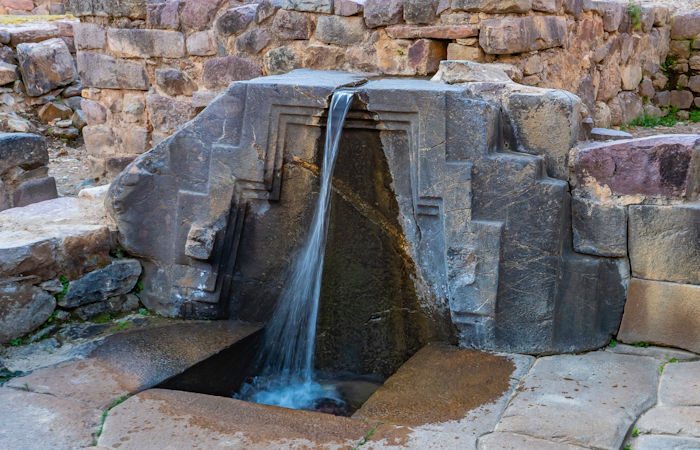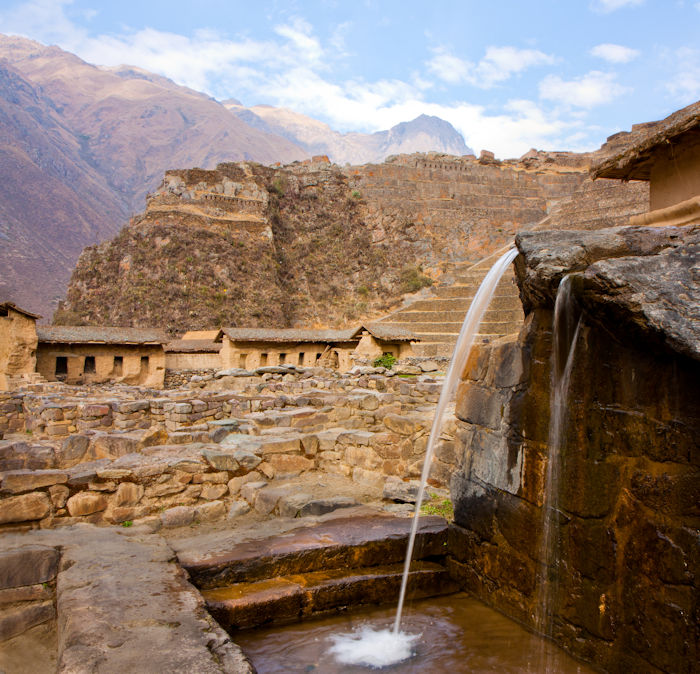Incamisana Water Temple At Ollantaytambo, Peru: Marvelous Engineering Masterpiece Of Inca
A. Sutherland - AncientPages.com - The Incas were known for their engineering practices, particularly water engineering. Their design of water systems was influenced by their strong beliefs in power of water.
One of many fountains of the Incamisana Water Temple. The fountain called Baño de la Ñusta (Bath of the Princess Fountain) is composed of a stream of water flowing in a single block of stone, and continues over the Inca's sacred stepped chakana symbol, and then, down into a small pool. Credit: Adobe Stock - videobuzzing
They saw water as both a physical and spiritual phenomenon. They considered their great civilization as something that arises from water.
The Incamisana temple at Ollantaytambo in Peru was constructed for the worship of deities who gave the Inca people water and water itself. Even today, in our modern terms, the structure represents the Inca's masterpiece of both civil engineering and construction. It was designed to focus on religious ceremonies and offerings.
It's definitely a truly remarkable achievement, especially if we consider the region's harsh weather and the altitude of 2,792 m (9,160 ft) above sea level.
Flooding that took place in 1679 damaged the temple, but the deposit of sediment, fortunately, preserved the lower portion of it.
The Patacancha Valley is divided into four main basins (the Yuracmayo, San Pablo, Paq'chapata, and Puma Paqcha (or Media Luna). Through these basins, the Inca engineers were able to redesign a canal system extending it for several kilometers.
Many of the channels in the system were originally built by the settlers of Killke (Quillke), pre-Inca culture (900 to 1200 AD). These people occupied the South American region around Cusco, Peru, before the arrival of the Incas in the 13th century. The channels were used mainly as irrigation for the hundreds of terraces scattered across the valley.
Dr. Richard Miksad studied the water sources of Incamisana in Ollantaytambo and led the team of researchers from the University of Virginia, Wright Water Engineers, Wright Paleohydrological Institute, and archaeologists Arminda Gibaja Oviedo and Dr. Gordon McEwan, who conducted reverse engineering field research at the site.
The Incamisana is located north of the Manyaraki canal, in the Sacred Valley of the Incas at almost an altitude of 3,000 meters and approximately 70 kilometers northwest of Cusco. This sophisticated water complex consists of rooms, open spaces, a beautiful complex of pools, ornamental fountains, waterfalls, and buried channels.
The Incas had advanced the understanding of modern hydraulic principles. They were able to design the channels to avoid the so-called hydraulic jumps, or used them if necessary. This was especially difficult since the flow rates occur in different amounts in rainy seasons.
Incamisana, Ollantaytambo, Peru. Credit: Adobe Stock - kcullen
The Incas were also able to develop successful construction methods. For example, impermeable rock coating was used to prevent water from leaking out of the channels. To protect against landslides and erosion of multi-level terraces foundations are connected to drainage channels.
Fourteen Ceremonial Fountains
The excavated temple has fourteen ceremonial fountains and additionally, three others that were never completed, and then the place was abandoned. There are also canals and a well-planned and meticulously engineered conduit/distribution water system.
The Incamisana has platforms and elaborately carved stone niches; channels and fountains are moving water through the temple. The Incamisana played an important role, but in the design of these Inca watery systems, the ruler, as the most important official, would have access to freshwater before other people used it.
The network of roads, carefully planned, engineered, built, and maintained, connected the Incamisama sanctuary with the Inca Empire.
Updated on October 11, 2023
Written by – A. Sutherland - AncientPages.com Senior Staff Writer
Copyright © AncientPages.com All rights reserved. This material may not be published, broadcast, rewritten or redistributed in whole or part without the express written permission of AncientPages.com
Expand for referencesMore From Ancient Pages
-
 A Glimpse Into The Past – Sights And Sounds Of St. Paul’s Cathedral Recreated
Archaeology | Oct 8, 2021
A Glimpse Into The Past – Sights And Sounds Of St. Paul’s Cathedral Recreated
Archaeology | Oct 8, 2021 -
 Bronze Age Swords Were Used By Skilled Fighters – New Study
Archaeology | Apr 29, 2020
Bronze Age Swords Were Used By Skilled Fighters – New Study
Archaeology | Apr 29, 2020 -
 What Is The History Of Pancakes?
Ancient History Facts | Mar 7, 2024
What Is The History Of Pancakes?
Ancient History Facts | Mar 7, 2024 -
 Viking Fashion: Men And Women Were Vain And Very Clean During The Viking Age
Ancient History Facts | May 17, 2024
Viking Fashion: Men And Women Were Vain And Very Clean During The Viking Age
Ancient History Facts | May 17, 2024 -
 Vegvisir – Old, Sacred Norse Symbol Of Protection And Guidance
Ancient Symbols | May 23, 2020
Vegvisir – Old, Sacred Norse Symbol Of Protection And Guidance
Ancient Symbols | May 23, 2020 -
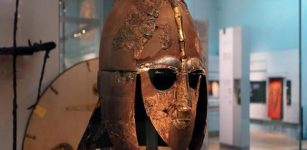 Burial Practices In Unified Cultures Of Early Medieval Europe
Archaeology | Jan 22, 2021
Burial Practices In Unified Cultures Of Early Medieval Europe
Archaeology | Jan 22, 2021 -
 Is There A Hidden Ancient Message Inside San Miniato Al Monte Basilica?
Featured Stories | Oct 3, 2022
Is There A Hidden Ancient Message Inside San Miniato Al Monte Basilica?
Featured Stories | Oct 3, 2022 -
 Harem Conspiracy – Plot To Murder Ramesses III, The Last Great Warrior Pharaoh
Featured Stories | Mar 24, 2018
Harem Conspiracy – Plot To Murder Ramesses III, The Last Great Warrior Pharaoh
Featured Stories | Mar 24, 2018 -
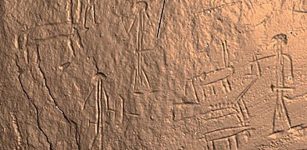 Ancient Rock Engravings Unveil Intriguing Insights Into Human Cultures
Archaeology | Jul 4, 2023
Ancient Rock Engravings Unveil Intriguing Insights Into Human Cultures
Archaeology | Jul 4, 2023 -
 Incredible Discovery Of A Poem By Virgil On A Roman Oil Amphora
Archaeology | Jun 21, 2023
Incredible Discovery Of A Poem By Virgil On A Roman Oil Amphora
Archaeology | Jun 21, 2023 -
 Ancient Knowledge Of Levitation And Antigravity
Ancient Mysteries | Jan 24, 2016
Ancient Knowledge Of Levitation And Antigravity
Ancient Mysteries | Jan 24, 2016 -
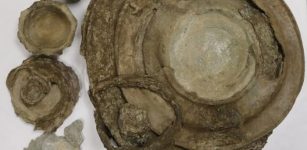 Rare 2,000-Year-Old Roman Hoard Discovered In Suffolk
Archaeology | Jul 5, 2023
Rare 2,000-Year-Old Roman Hoard Discovered In Suffolk
Archaeology | Jul 5, 2023 -
 Ancient King Who Built A Mysterious Underground City Illuminated By Artificial Lights As Hiding Place
Ancient Mysteries | Apr 16, 2018
Ancient King Who Built A Mysterious Underground City Illuminated By Artificial Lights As Hiding Place
Ancient Mysteries | Apr 16, 2018 -
 On This Day In History: Jukebox Installed For The First Time In San Francisco – On Nov 23, 1889
News | Nov 23, 2016
On This Day In History: Jukebox Installed For The First Time In San Francisco – On Nov 23, 1889
News | Nov 23, 2016 -
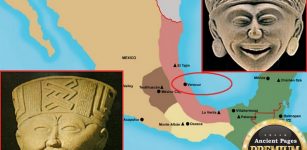 Curious Pre-Columbian Clay Figurines With Smiling Faces From Veracruz
Ancient Mysteries | Jan 29, 2018
Curious Pre-Columbian Clay Figurines With Smiling Faces From Veracruz
Ancient Mysteries | Jan 29, 2018 -
 Intriguing Ket People – The Last Nomadic Hunter-Gatherers Of Siberia
Featured Stories | Nov 23, 2023
Intriguing Ket People – The Last Nomadic Hunter-Gatherers Of Siberia
Featured Stories | Nov 23, 2023 -
 Playful Puck (Robin Goodfellow) – Master Of Harmless Mischief And Shakespeare’s Visit To The Magic Valley
Myths & Legends | Jun 22, 2024
Playful Puck (Robin Goodfellow) – Master Of Harmless Mischief And Shakespeare’s Visit To The Magic Valley
Myths & Legends | Jun 22, 2024 -
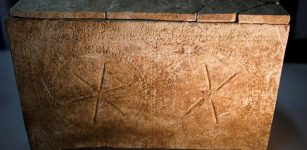 ‘Ali Baba Cave’ Treasures: Burial Boxes Inscribed With Jesus’ Name May Help Reconstruct Jesus’ Life And Death
Archaeology | Mar 21, 2017
‘Ali Baba Cave’ Treasures: Burial Boxes Inscribed With Jesus’ Name May Help Reconstruct Jesus’ Life And Death
Archaeology | Mar 21, 2017 -
 Chang’e: Chinese Goddess Of Moon And Immortality
Chinese Mythology | Aug 7, 2019
Chang’e: Chinese Goddess Of Moon And Immortality
Chinese Mythology | Aug 7, 2019 -
 Puzzling Biological Event 7,000 Years Ago – Something Weird Happened To Men
Archaeology | Jun 1, 2018
Puzzling Biological Event 7,000 Years Ago – Something Weird Happened To Men
Archaeology | Jun 1, 2018

